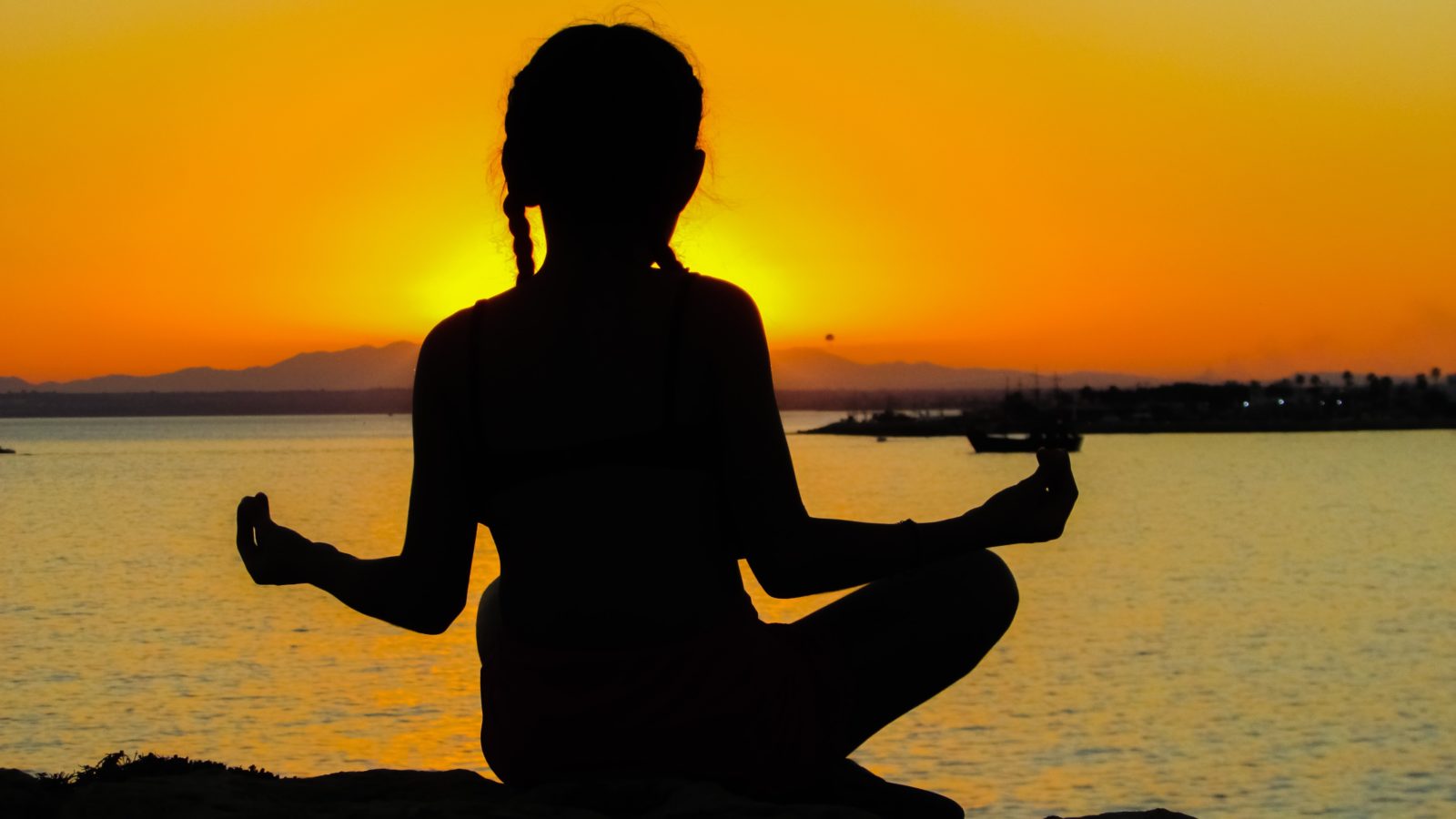Here are a few thoughts about beginning a meditation practice:
It’s simple, not easy – the act of meditating couldn’t be simpler: sit comfortably, still and upright, eyes virtually closed, breathe deeply, rhythmically, and focus. What you choose to focus on is entirely up to you.
Think big – begin by focusing on something that will easily hold your attention. Over time, as you get better at it, practice concentrating on more and more subtle things. For example, you may begin by silently repeating the Lord’s Prayer, each time visualizing the words and their meaning. Eventually you may concentrate on intangible concepts or ideas.
In between, you may focus on your breathing: following each inhalation, exhalation, noting the sensations, temperature and sounds. You may practice concentrating by repeating the alphabet backwards – or counting backwards. You might trace otherwise sub-conscious sensations throughout your body: shifting your attention from the feeling in your toes to the balls of your feet, to your heels and up, or focus on the sensation of your heart beating. These have worked for me; something entirely different may work for you – the point is to train your mind to concentrate on one thing for longer and longer periods.
Don’t eat first – for some reason meditation works better on an empty stomach; I do it every morning after I’ve had coffee but before I eat breakfast.
Don’t get discouraged – your mind doesn’t want to be still! It naturally wants to meander, imagine, remember, analyze, make lists and excuses – that’s what it does. So when it starts to do that, don’t get discouraged, impatient or upset; rather, gently recognize it’s just doing it’s thing, and bring your focus back to whatever you’ve decided to concentrate on.
It takes awhile – while you’ll hopefully notice subtle benefits almost from the start, a truly effective meditation practice takes years to develop – so start now and when you’re my age you’ll be very thankful you did! For me, the calmness I experience while gently holding my mind still extends beyond the time I’m seated – for longer periods the more I practice, such that eventually, a sense of peacefulness seems to follow me throughout the day.
Be consistent – do it everyday, same place and time. Obviously, it’s not possible every day but make the times you skip it the exception rather than the rule. For me, it’s as important as brushing my teeth – and more fun!
It gets easier – it gets easier as you get older. It’s easier to be consistent as there will be more time, and fewer deadlines and stressors in your life; and like everything else, the more you practice, the better you get at it.
Don’t force it – find a balance between sitting there a little longer and giving in to the voice in your head that says, “OK, I’m done”. Make meditating something you enjoy, that you look forward to. All habits occur at the intersection of desire, resources (time in this case) and know-how (this couldn’t be easier), so without desire, this won’t become a habit!
Set an intent – the mindset you approach your practice with is important. If, as originally intended, you use the time to draw closer to your understanding of God you’ll have a very different experience/result than if you practice to simply feel better. Meditation preceded prayer; classical Indian yoga or meditation is based on the realization that Consciousness – the awareness OF our thoughts (without which we wouldn’t even know we’re alive!) – has divine attributes, again preceding modern religion’s notion of our spirit or soul.
Prepare, prepare, prepare – Patanjali devotes an entire chapter of his 4-chapter text (Patanjali’s Yoga Sutras, the “bible” of classical Indian yoga or meditation) to telling us how to prepare to meditate, and only three lines to telling us how to do it. Effective meditation is predicated on fostering peace of mind and body before we sit to meditate; specifically, by maintaining a positive attitude, adhering to the Golden Rule and Serenity Prayer, and to a lesser extent preparing physically – so we can approach sitting and meditating with a clear conscience, and physically prepared to sit still and comfortably for some length of time.
Science – Trying to meditate without understanding the science behind how our mind works, the nature of karma and Consciousness is like walking along the beach on a beautiful day with a paper bag over one’s head. Yeah, it’s possible, but nowhere near as much fun or enlightening. So when you have time, read the last dozen or so of my blog posts [starting with “What is yoga?”] which introduce Patanjali’s Yoga Sutras – and eventually read the sutras themselves. My go-to on-line resource is SwamiJ.com.
Anytime you have questions, I’d be honored to respond to them.
God bless, Skip




